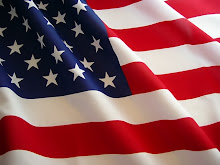 In July 2008, months before the presidential election, The New Yorker ran a cover cartoon entitled “The Politics of Fear” by Barry Blitt. In the caricature, Barack Obama and his wife, Michelle, stand facing each other in an oval-shaped room. The presidential candidate is dressed in a tan tunic, sandals, and a turban. Michelle wears combat boots, camouflage army pants, and a tight black shirt. A machine gun is draped over her right shoulder and her hair crowns her head in an Afro. The Obamas are connected to each other by the fist-bump that became infamous in the summer of 2008. Behind Barack is a lit fireplace, in which burns an American flag, and above the mantel hangs a framed portrait of Osama Bin Laden. The cartoon is charged with criticisms of race, religion, and the politics of the War on Terror. I would like to argue that this cover of The New Yorker is an example of the Islamophobia that has permeated our society since September 11th.
In July 2008, months before the presidential election, The New Yorker ran a cover cartoon entitled “The Politics of Fear” by Barry Blitt. In the caricature, Barack Obama and his wife, Michelle, stand facing each other in an oval-shaped room. The presidential candidate is dressed in a tan tunic, sandals, and a turban. Michelle wears combat boots, camouflage army pants, and a tight black shirt. A machine gun is draped over her right shoulder and her hair crowns her head in an Afro. The Obamas are connected to each other by the fist-bump that became infamous in the summer of 2008. Behind Barack is a lit fireplace, in which burns an American flag, and above the mantel hangs a framed portrait of Osama Bin Laden. The cartoon is charged with criticisms of race, religion, and the politics of the War on Terror. I would like to argue that this cover of The New Yorker is an example of the Islamophobia that has permeated our society since September 11th.Islamophobia, in its most basic form, is a fear or hatred of Islam and Muslims. In the post-9/11 American society, however,
Islamophobia has become attached to a racial component. Junaid Rana argues that race has a long history of attaching to a cultural or religious component of a group of people. For example, in the late 15th century, the Spanish Inquisition racialized Jews and Muslims by claiming that they were inherently inferior to Christians, and therefore needed to be converted or destroyed. Scientific racism of the late 18th and early 19th centuries allowed the religious component to be separated from race, and race was thus determined by white supremacy. Decades later, Hitler applied this biological ideology to Jews during the Holocaust.
As an immediate reaction to the September 11th terrorist attacks, Congress passed the USA PATRIOT Act, which expanded government surveillance powers and avoided both the bureaucratic and judicial systems. As a result of the act, Arab and Muslim Americans became the target of thousands of FBI and CIA arrests, most without knowledge of their charges or the evidence against them. Essentially, the liberty of these Americans was taken in order to keep the nation secure from future terrorist attacks. As Rana argues, racial profiling has become rampant in our nation, relying on the racialized logic that assumes Muslims can be identified solely on appearance. “Muslim” and “Arab” quickly became conflated terms, and anyone with a beard, turban, or veil was deemed an enemy.
“The Politics of Fear” cartoon takes the identity of Muslims a bit further. Barack and Michelle Obama are African-American, a historically racialized and consequently marginalized group in American society. Yet in the caricature, the identity of the Obamas is mapped onto the current ideology of Islamophobia and reflects the concerns of the time surrounding the true religion and ethnic origins of Barack Obama. Obama’s turban resembles that of Bin Laden’s in the background, and without any other indication, the reader assumes Obama is Muslim, based solely on appearance. Michelle, on the other hand, is not dressed in a traditional hijab that is so representative of Muslim women. Rather, she wears a militant outfit, coupled with wild hair and machine gun, and she can easily be classified as a terrorist. The skin color of the Obamas even seems to be lightened in order to give them the appearance of Arabs or Muslims rather than African-Americans. By appropriating their blackness and giving them a Muslim identity, Blitt effectively makes the Obamas the enemy of the nation, even including a burning American flag to further emphasize his point.

No comments:
Post a Comment